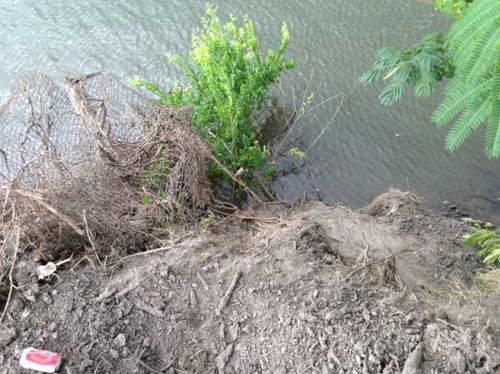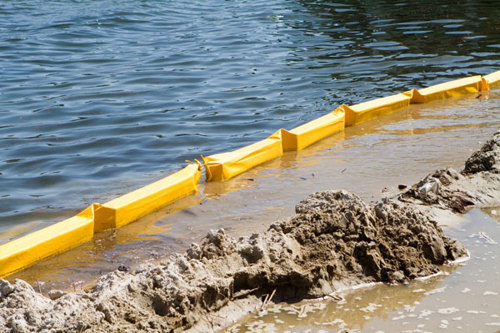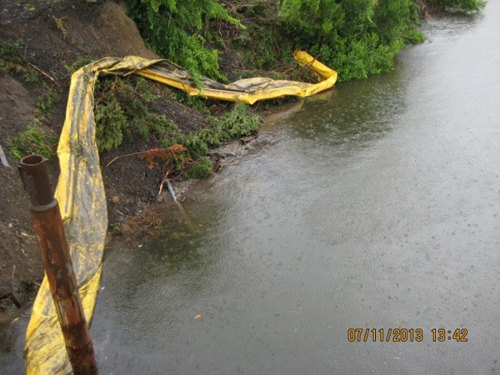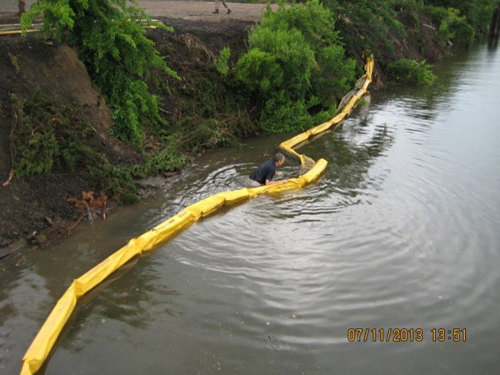
Criminal vs. Civil Laws of VA Tidal Wetlands in Environmental Law
A commercial water front property owner called us to say that a regulator from the Virginia Department of Environmental Quality and a second regulator from the City of Norfolk were at the property investigating a potential violation of the Virginia Tidal Wetlands Act. The water front property owner had hired a worker to clean the property; the worker used a bulldozer to push debris into the Elizabeth River consisting of chain link fencing, vegetation, loose dirt, and other refuse, some of which is shown in the photo:

On arrival at the water front property it was clear that our client was facing an environmental enforcement action. The only question was whether the environmental enforcement action would be civil or criminal. A civil environmental enforcement action causes financial pain for the client because the Virginia Tidal Wetlands Act allows fines up to $25,000.00 per violation per day. Still, civil enforcement is better for the client because there is no possibility of jail time in a civil environmental enforcement action (one year of jail is possible in a criminal enforcement) and there would be no criminal conviction on our client’s record if the regulators agreed to use the civil environmental enforcement action instead of the criminal environmental enforcement action. As a heavy thunderstorm gathered in the sky above, our client watched while a negotiation played out on the question of whether the regulators would select a civil or a criminal environmental enforcement action, with the regulators eventually agreeing to a civil environmental enforcement action on the condition that our client install a “turbidity curtain” to protect the river before the rain started to fall. A turbidity curtain, pictured below, is a floating barrier that traps silt, sediment, and other solid material thereby preventing it from washing into a body of water.

Steven Frame/Shutterstock.com
If a turbidity curtain could be deployed before the rain arrived, the trash deposited on the bank would not be washed down the river.
Our client hastily arranged to borrow a turbidity curtain from a neighbor. As is evident from the video showing how to install a turbidity curtain (shown below), it is essential to have a motorized work boat to install a turbidity curtain. Although a crew of a half-dozen laborers arrived with the borrowed turbidity curtain, there was no motorized work boat and there was not time enough to arrange for one before the onset of rain.
This is an image of the shoreline where the turbidity curtain was required to be installed:

The steep 20 foot drop from the top of bank to the waterline made it impossible for the group of laborers to deploy the turbidity curtain while standing at top of bank.
The only way to deploy this turbidity curtain done was for a person to scale the bank, get into the river, and do that which a motorized work boat would accomplish if a boat were present at the site. Rather than expose the client to criminal prosecution, Jim Lang removed his shoes and waded into the Elizabeth River to deploy the turbidity curtain by hand.

Once the curtain was successfully deployed, the rain came down, but the sediment from the debris did not wash down the river. The Elizabeth River was saved from further environmental damage, and the water front property owner was saved from a criminal environmental enforcement action.

